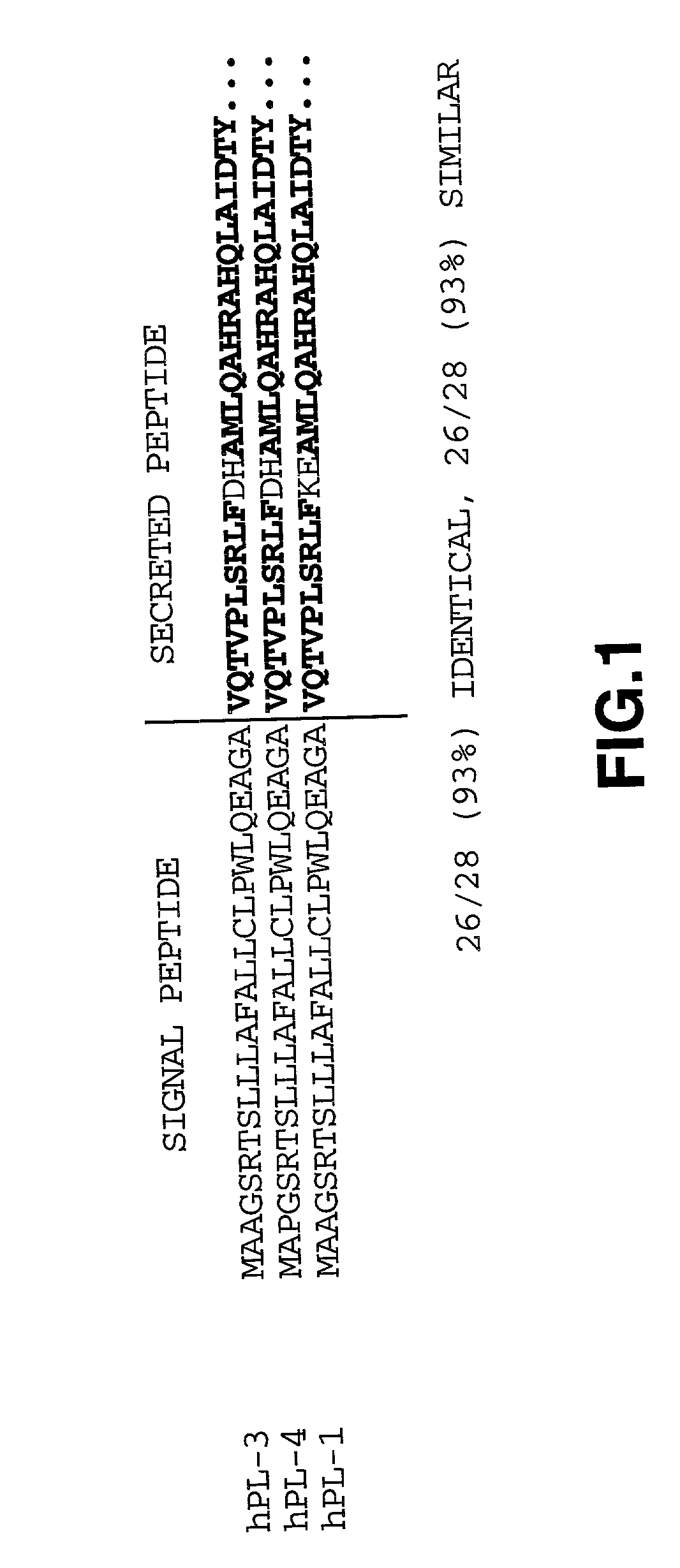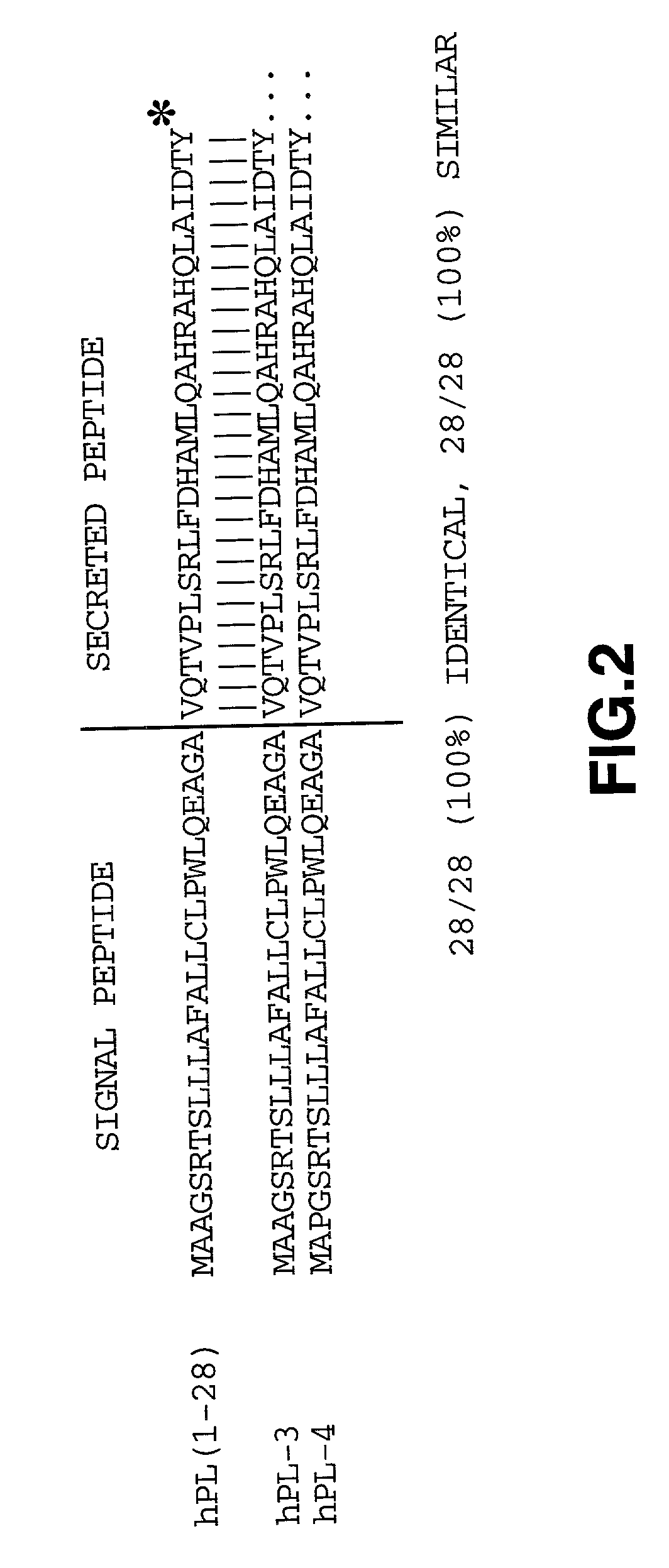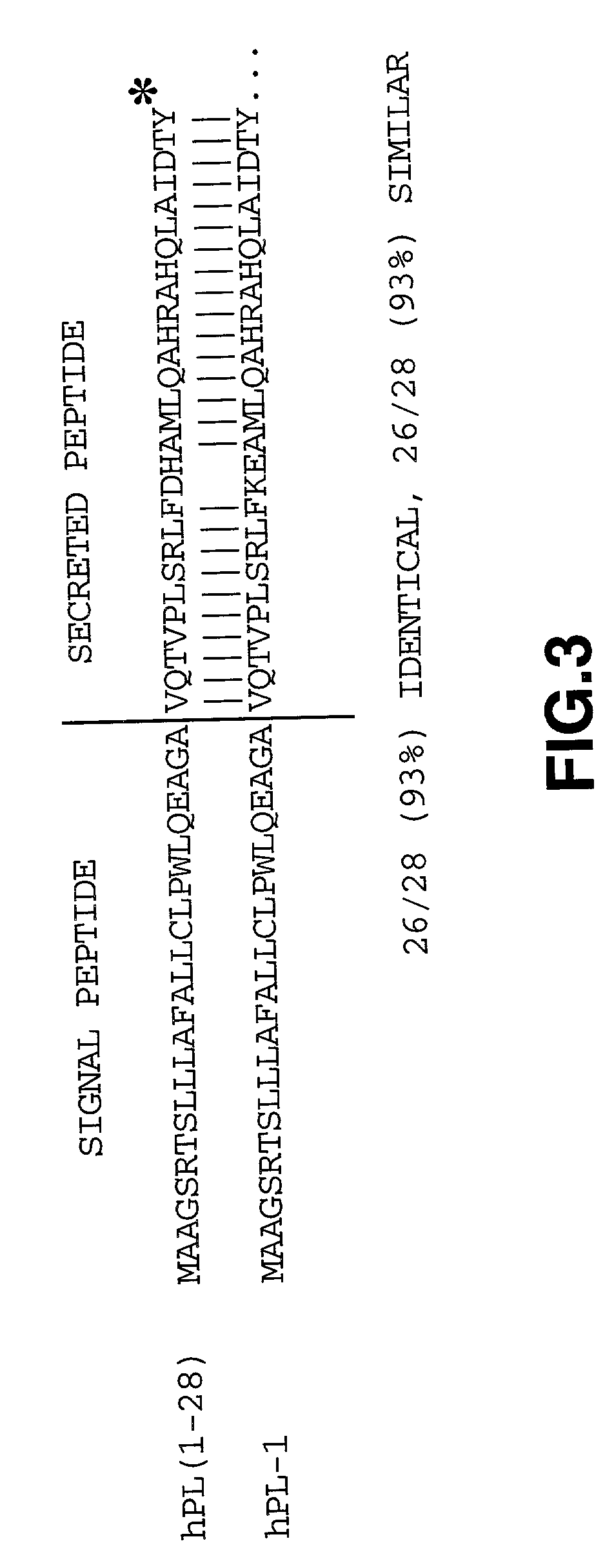Interferon-suppressing placental lactogen peptides
- Summary
- Abstract
- Description
- Claims
- Application Information
AI Technical Summary
Problems solved by technology
Method used
Image
Examples
example 2
[0113] Characterization of the Suppression of IFN-gamma-Stimulated Activities by hPL(1-28).
[0114] Experimental Strategy
[0115] The hPL( 1-28) cDNA was identified by the functional property of suppression of MHC class II antigen levels on the cell surface following IFN-gamma treatment, but this result alone could not rule out trivial mechanisms for this suppression such as insertional mutagenesis of one of the genes involved in IFN-gamma receptor signaling or in the post-translational processing of MHC class II component polypeptides. For this reason the function of the cloned cDNA was tested directly using pools of stably transfected HeLa cells. Expression of three families of endogenous IFN-gamma-responsive genes in this reporter cell line was determined by flow cytometry using monoclonal antibodies that recognize MHC class II antigens (HLA-DR, DP, and DQ alpha chains), MHC class I heavy chains (HLA-A, B, and C ), and ICAM-1 antigen.
[0116] Methods
[0117] The hPL(1-28)-encoding cDNA w...
PUM
 Login to View More
Login to View More Abstract
Description
Claims
Application Information
 Login to View More
Login to View More - R&D
- Intellectual Property
- Life Sciences
- Materials
- Tech Scout
- Unparalleled Data Quality
- Higher Quality Content
- 60% Fewer Hallucinations
Browse by: Latest US Patents, China's latest patents, Technical Efficacy Thesaurus, Application Domain, Technology Topic, Popular Technical Reports.
© 2025 PatSnap. All rights reserved.Legal|Privacy policy|Modern Slavery Act Transparency Statement|Sitemap|About US| Contact US: help@patsnap.com



